The Allsvenskan has produced and developed some incredibly talented young players in recent years. Amane Romeo and Bénié Traoré are prime examples; the former is widely regarded as one of the best young players in the league, whilst the latter recently signed for newly promoted Premier League side Sheffield United. Additionally, 19-year-old Hugo Larsson joined Bundesliga side Eintracht Frankfurt, whilst former Nordsjaelland winger Ibrahim Sadiq joined Eredivisie side AZ Alkmaar from BK Hacken.
As the title suggests, in this tactical analysis, we are going to look at another player who we believe is on the verge of breaking through in the Swedish top flight. Kalipha Jawla is a centre forward who has caught the eye whilst playing for Djurgårdens IF under 19s. In this scout report, we will highlight the key aspects of the 17-year-old’s style of play and how he might fit into Djurgården’s tactics in the near future.
Dynamism and unpredictability
Jawla mostly plays as the central striker of a 4-3-3 formation and is the main attacking outlet for Djurgården U19, as their attacking play runs through him. One of the most noticeable traits of his style of play is just how progressive he is when in possession. Upon receiving the ball, Jawla’s instinct is always to try and do something positive with it. Since joining the U19 squad last season, Jawla has averaged 1.18 key passes per 90 and 1.26 take-ons per 90.
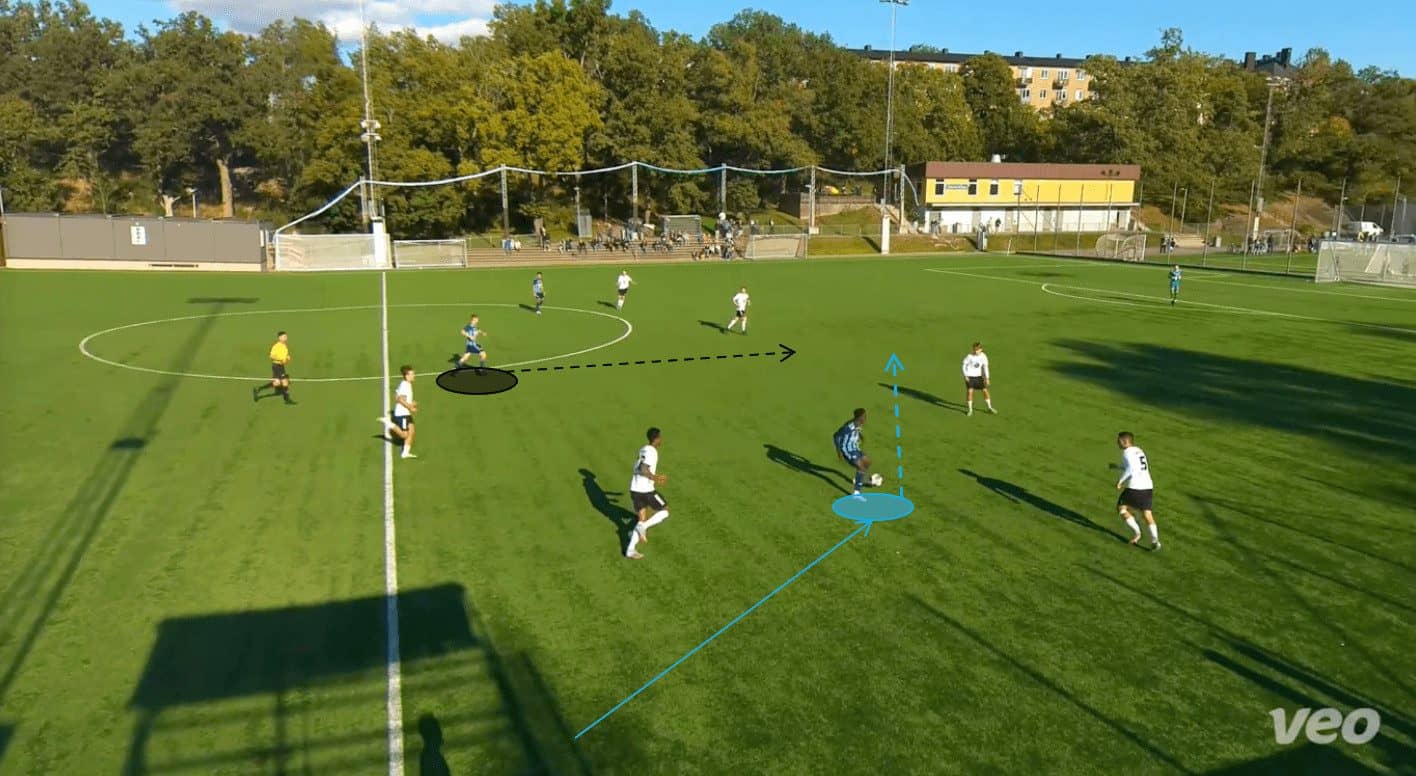
Here, we can see that Djurgården U19s are on the attack. Jawla got into space, and a teammate found him with a pass. The young forward controls the ball well, and instinctively, he looks to drive into the space ahead.
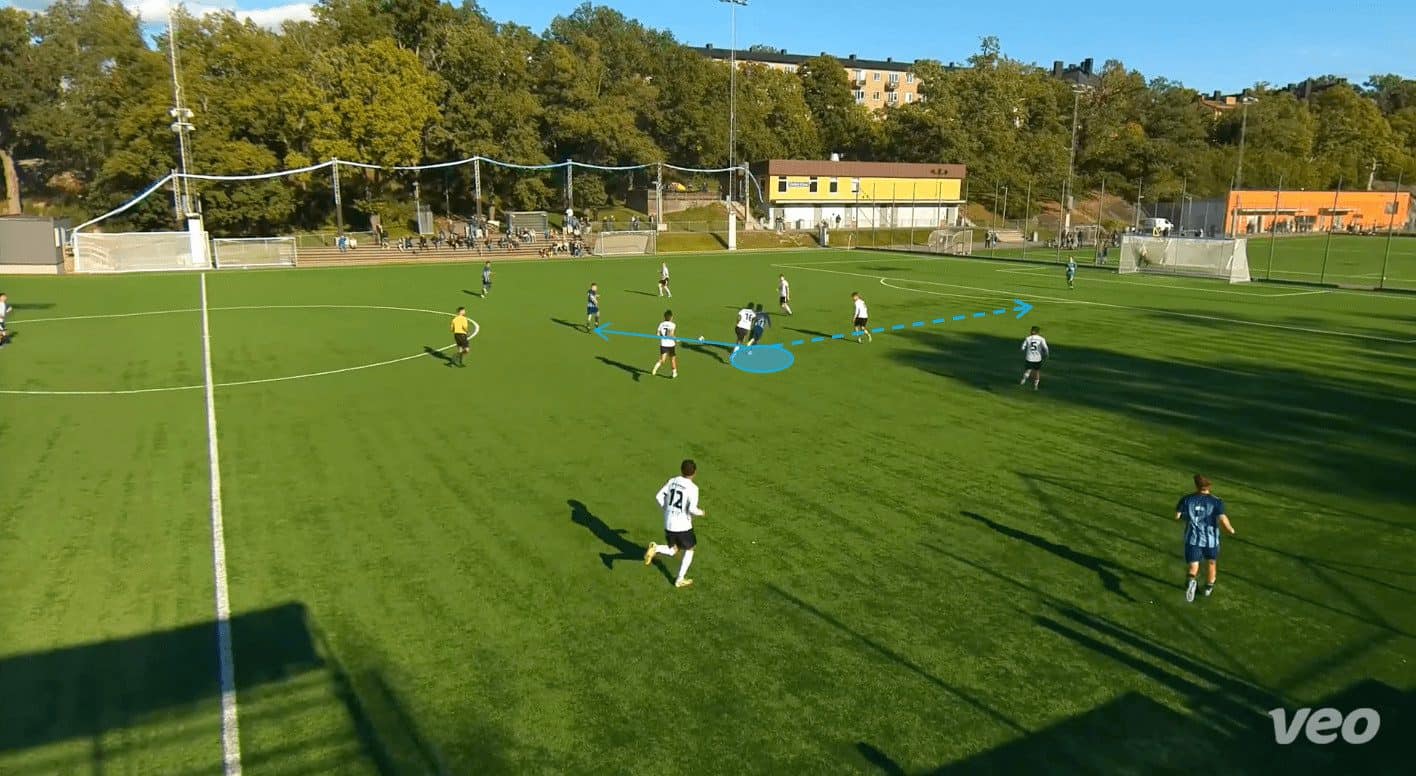
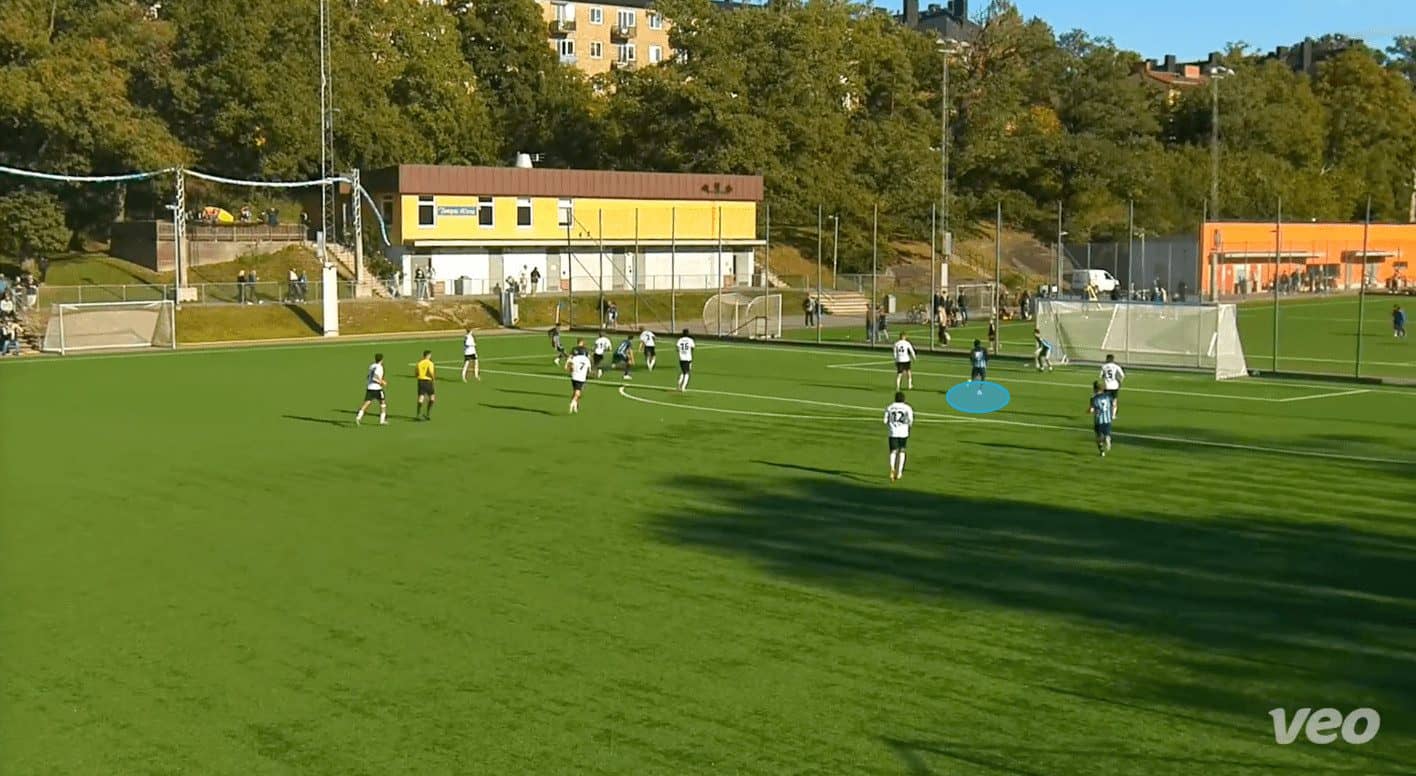
He then lays the ball off to a teammate but continues his run into the penalty area and, as we can see, gets into a good position, anticipating a cross will be played in.
Jawla’s dynamism greatly enhances the team’s build-up play. He will often drop deeper to receive the ball from defenders or midfielders. He then uses his passing skills to initiate attacks or carry the ball into more advanced positions, allowing teammates to enter spaces as defenders are drawn to him. His close control means he can have the ball at speed while ensuring the opposition cannot get near him to put in a tackle.
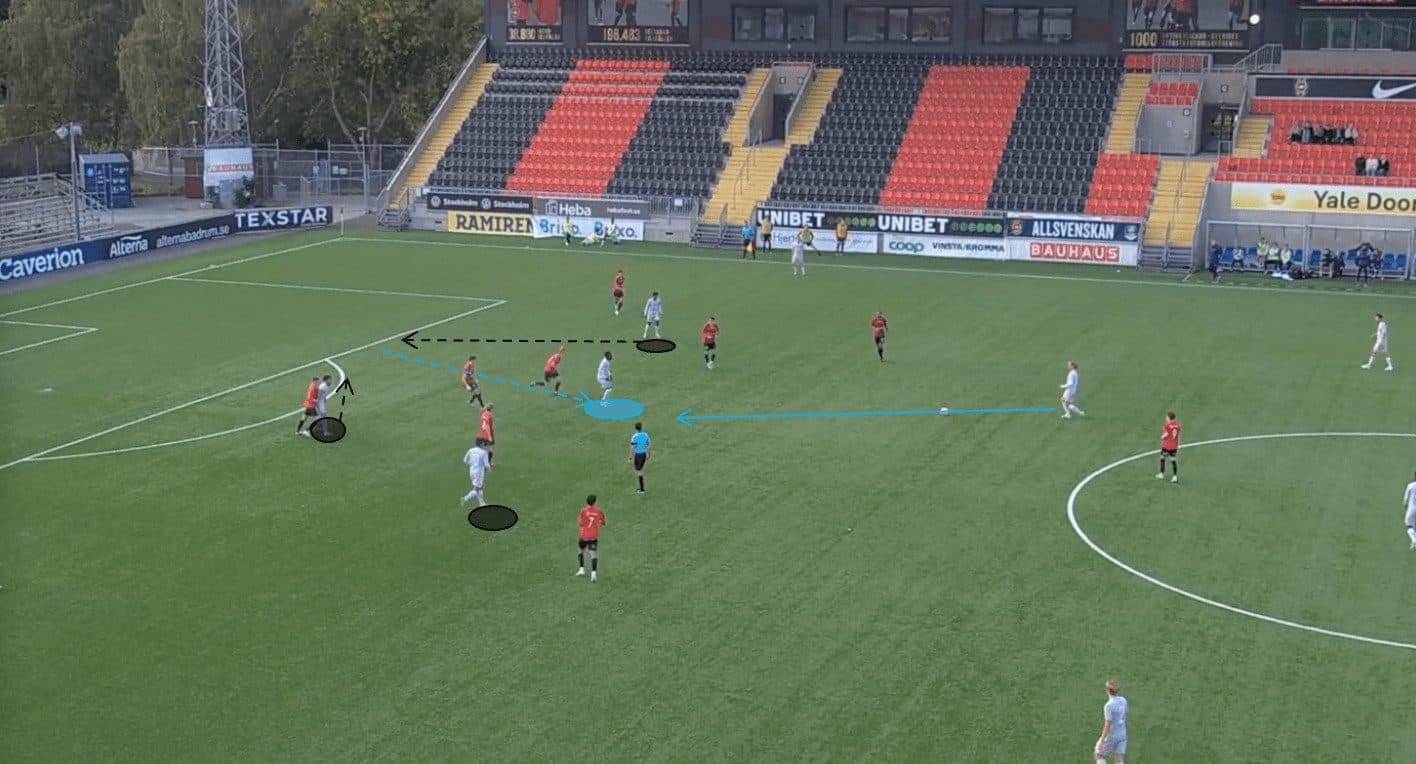
This time, Jawla moves towards the ball, which attracts his opponent’s attention, who leaves his position in the defensive line to follow him. This then creates space for two teammates to potentially run into the penalty area. Alternatively, Jawla can receive the pass, spin his opponent, and then carry the ball into the box himself.
A striker such as Kalipha Jawla can exploit spaces effectively. He has the confidence to carry the ball forward and either find or create gaps in the opposing defence. This attracts defenders and creates opportunities for himself and other attackers. His ability to break defensive lines can lead to quick, incisive attacks that catch the opposition off guard and present Djurgården with significant goalscoring opportunities.
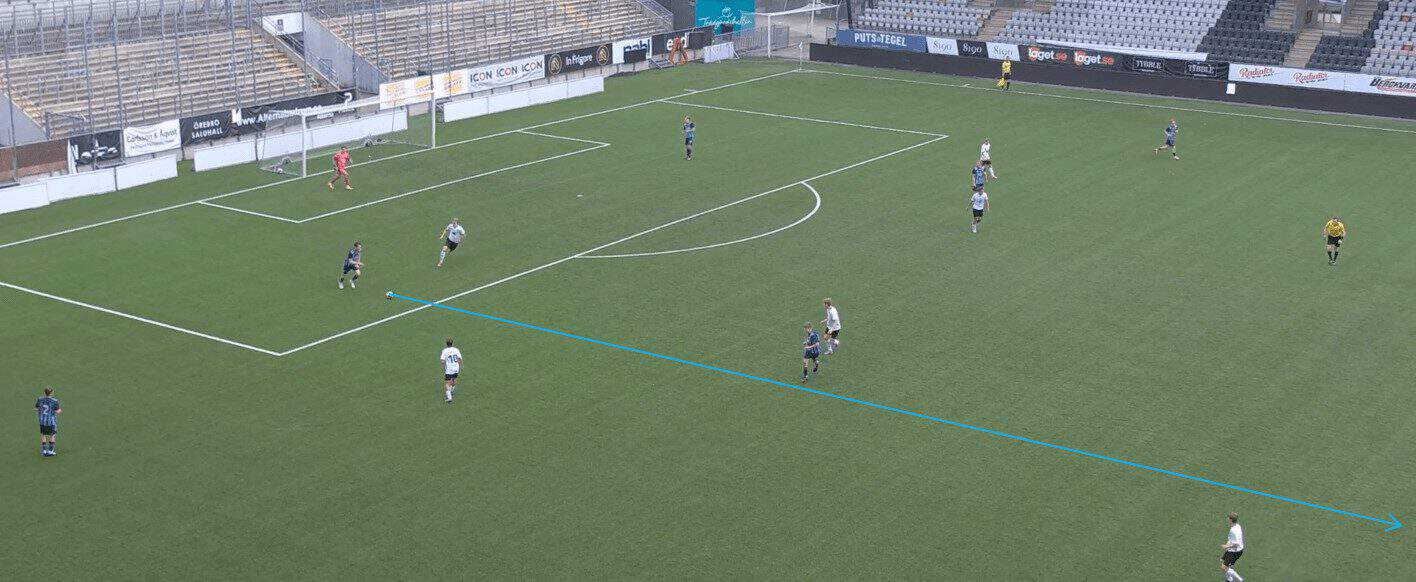
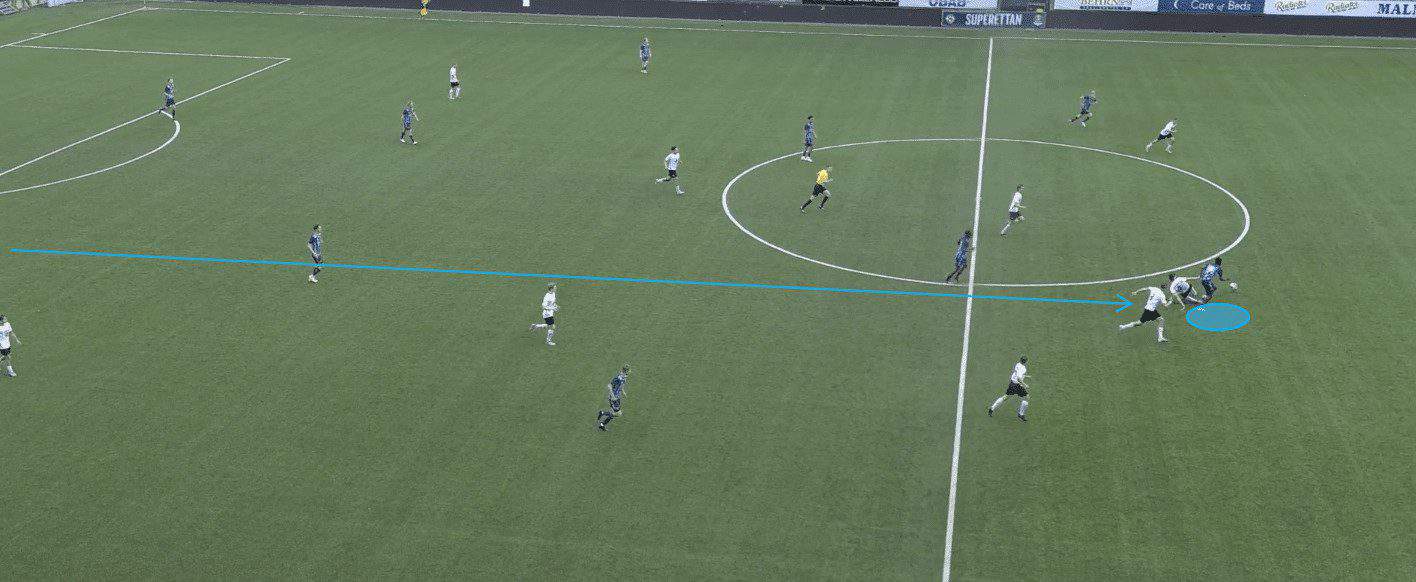
Furthermore, an example of Jawla spinning his opponent can be seen here. He is physically strong and can hold off his opponent whilst anticipating the pass. When he receives the ball, he has an excellent first touch, allowing him to change direction quickly and then carry the ball forward unopposed.
Jawla brings not only dynamism but unpredictability to the team’s attacking play. He is very direct and likes to isolate his opponent into a 1v1 situation where he can use his dribbling ability to break through, or he will look to drop deeper to either link up play or create space for others. Either way, it keeps opposing defenders on their toes as they cannot solely focus on his goalscoring threat but also need to account for his creative contributions, making it harder to defend against the team as a whole.
Off-the-ball movement
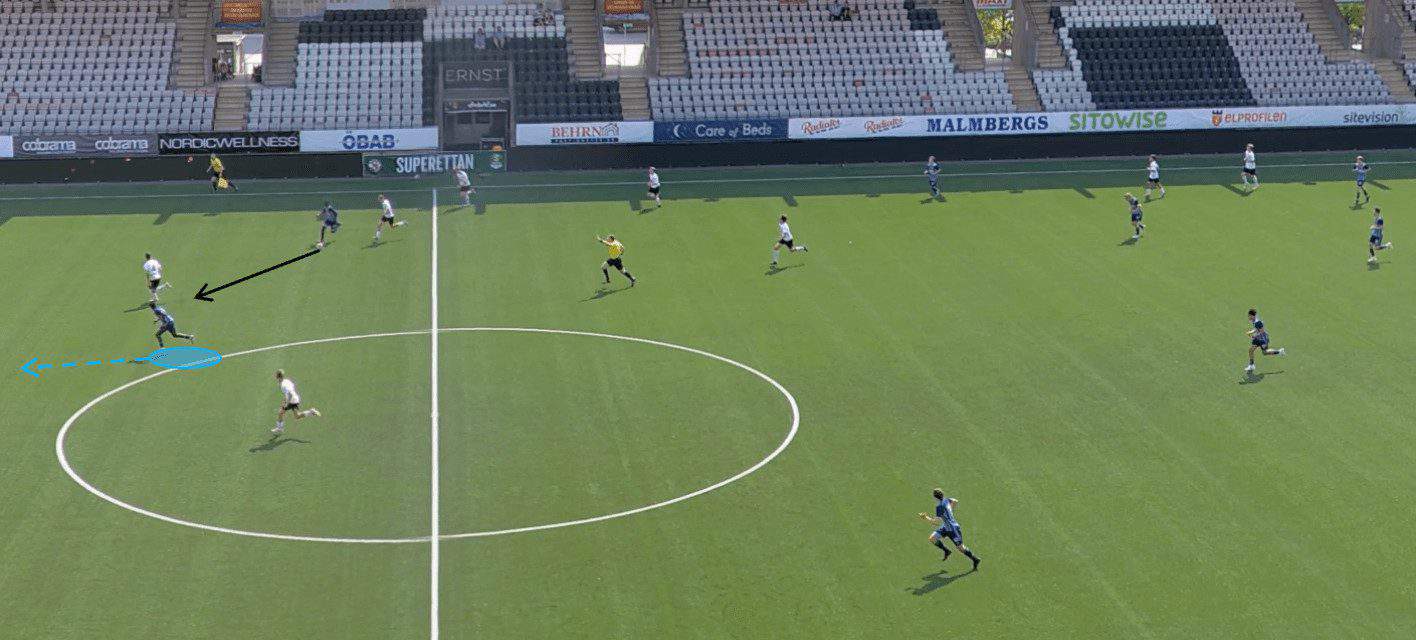
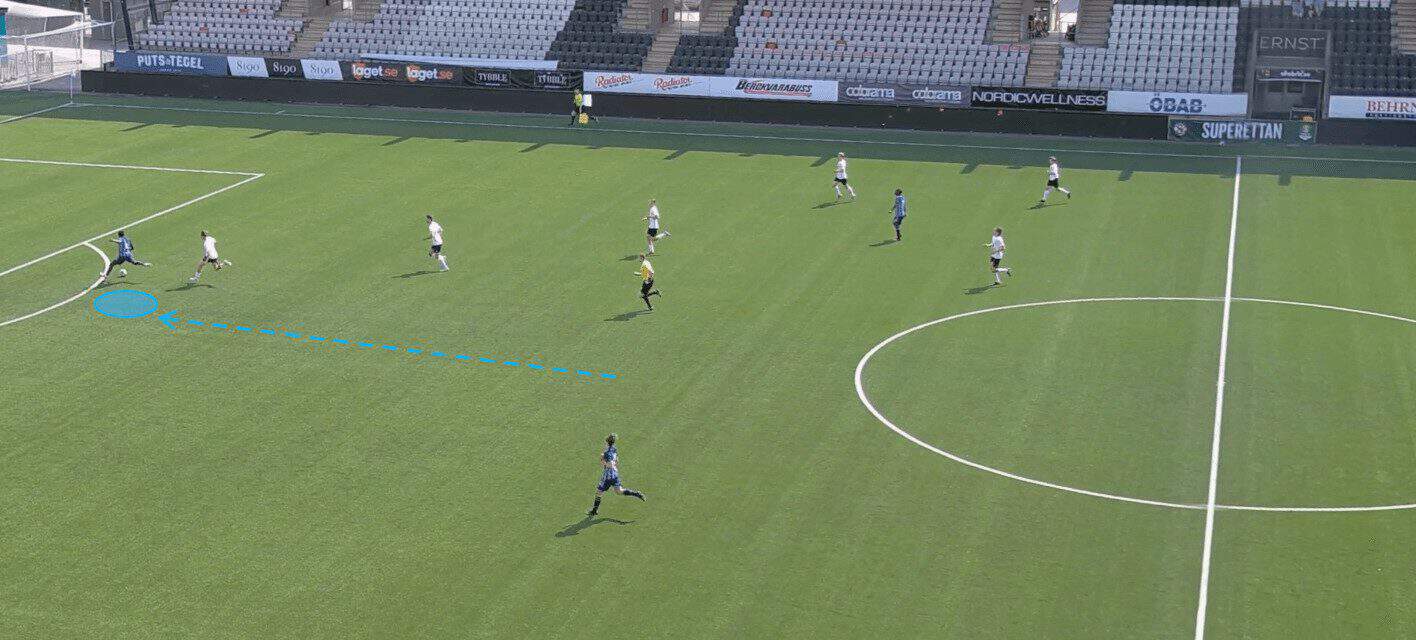
Jawla possesses an excellent ability to make well-timed runs in behind the opposition defence. This is especially useful when Djurgården are looking to transition quickly from defence to attack. He has a good burst of acceleration over short distances and frequently demonstrates he is capable of staying onside when making these runs in behind.
In this instance, shown above, Jawla makes one of these runs through the middle of the pitch, seeing that the opposition is caught out of position. He uses his speed to accelerate away from his opponent and goes through 1v1 with the goalkeeper. In this scenario, he calmly places the ball beyond the ‘keeper into the net.
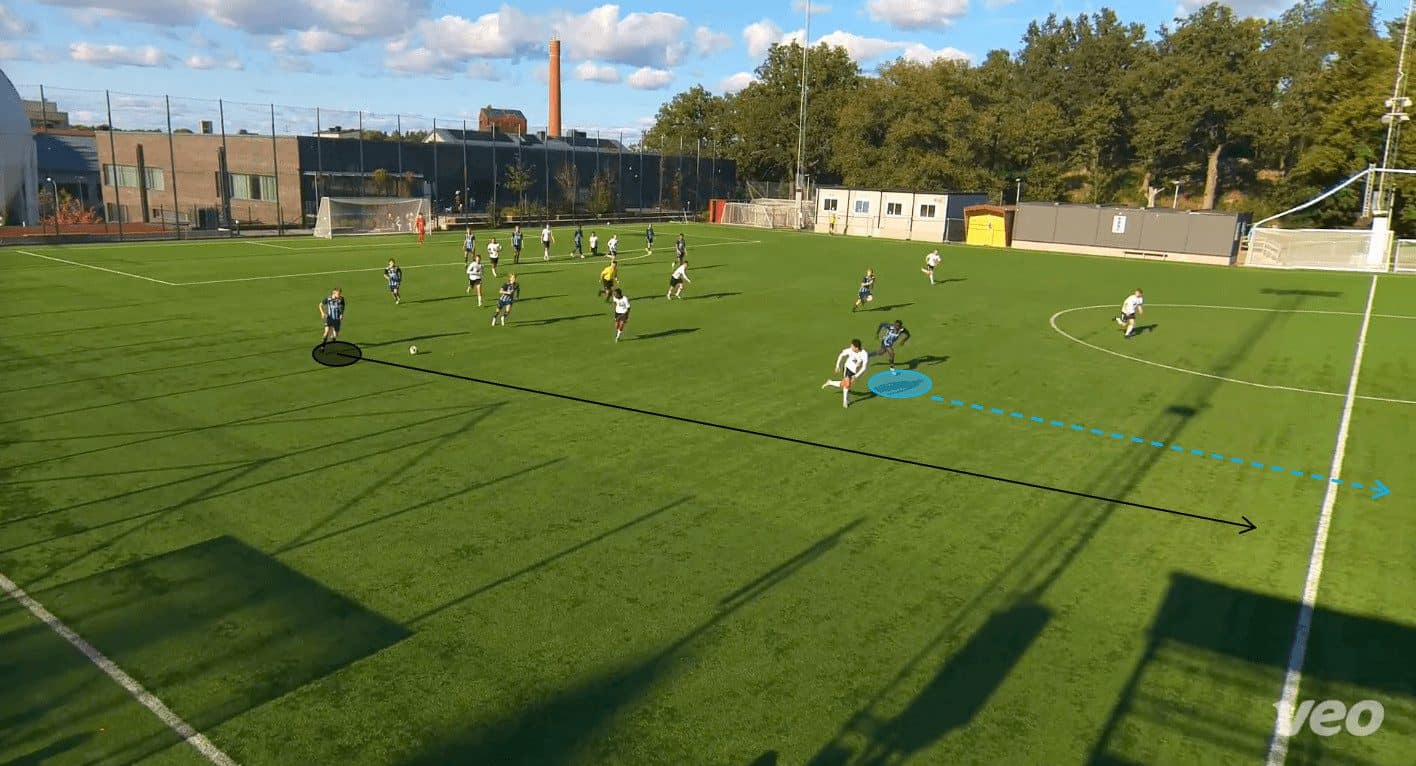
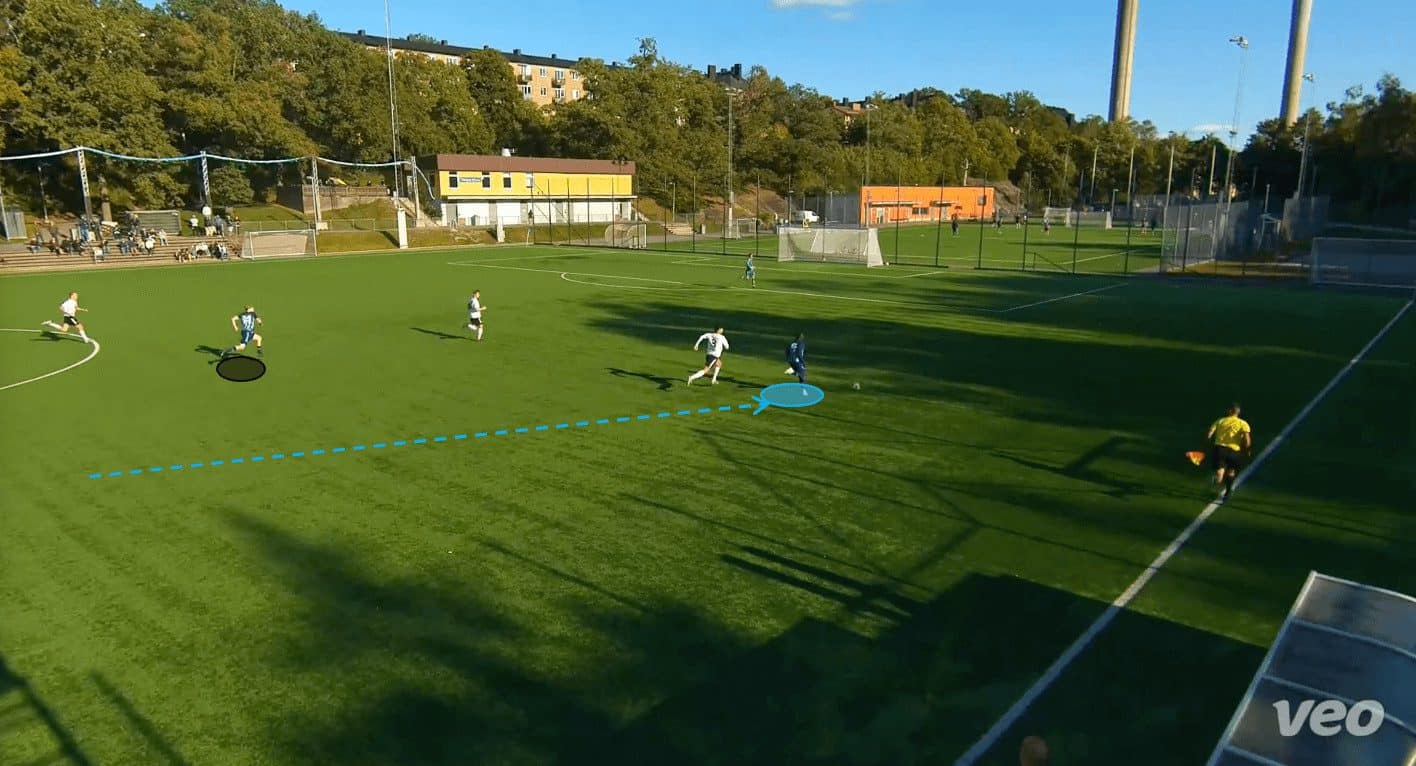
Moreover, the 17-year-old is highly skilled at making these runs from inside his own half. It is something that has become quite effective for Djurgården U19s; they sit in a low block during the defensive phase – almost allowing their opponents to think that they are pinned in. However, upon regaining possession, the ball is swiftly played to a wide player or a central midfielder, who promptly moves it forward into the path of Jawla, breaking through the opposition’s defensive line.
Again, this adds an element of surprise and unpredictability to the Djurgården’s attack. Jawla’s rapid acceleration and intelligent movement often catch the opposition defenders off guard and allow his team to execute transitions quickly, taking advantage of the defensive chaos.
The young centre-forward identifies spaces between defenders and exploits them very well. This creates opportunities for teammates to play through balls or long passes into the space ahead of him. This can often lead to him being in one-on-one situations with the goalkeeper, which increases the likelihood of him finding the back of the net.
It is worth pointing out that Jawla does not aim to get himself in 1v1s; he will carry the ball into the channels and wait for teammates to arrive in support. Additionally, he will hold the ball up and look to link up with others before making a run into the penalty area.
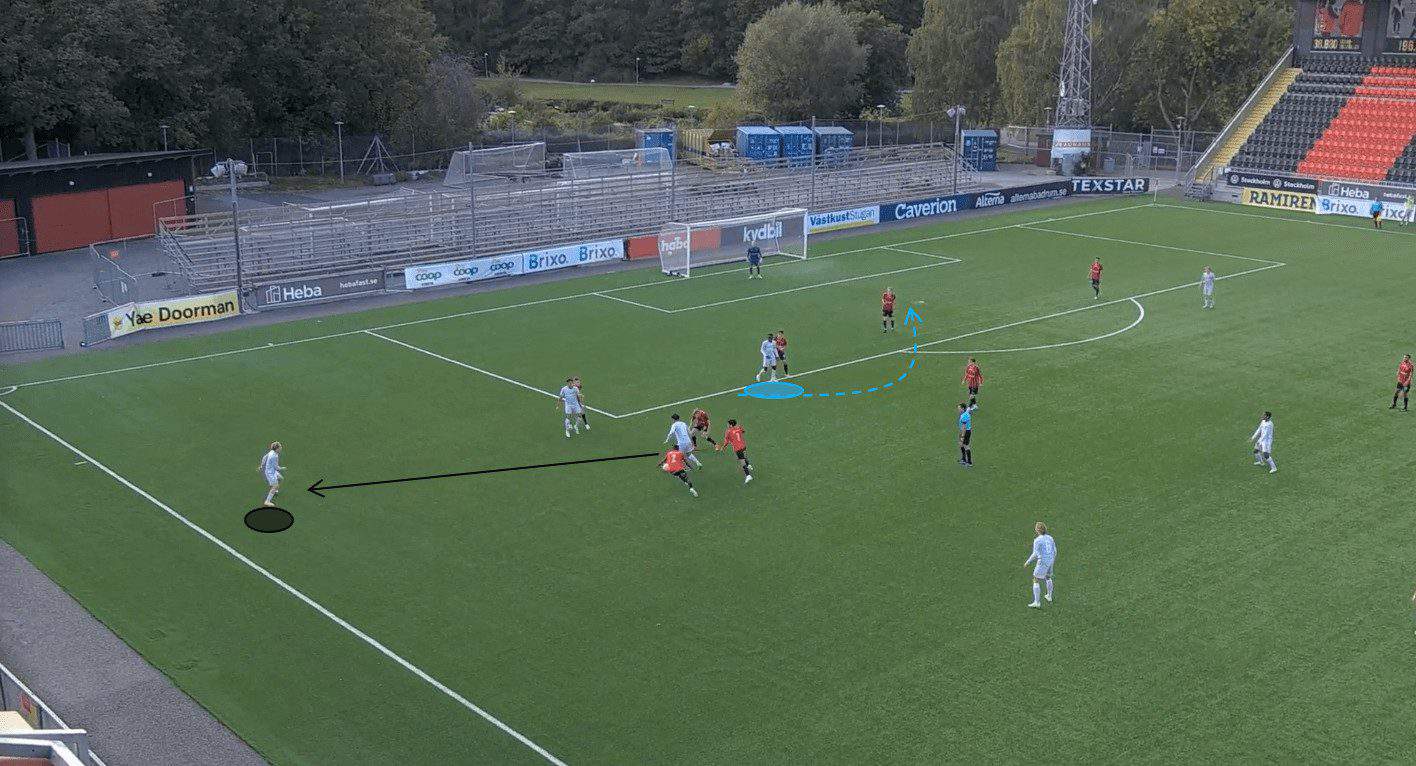
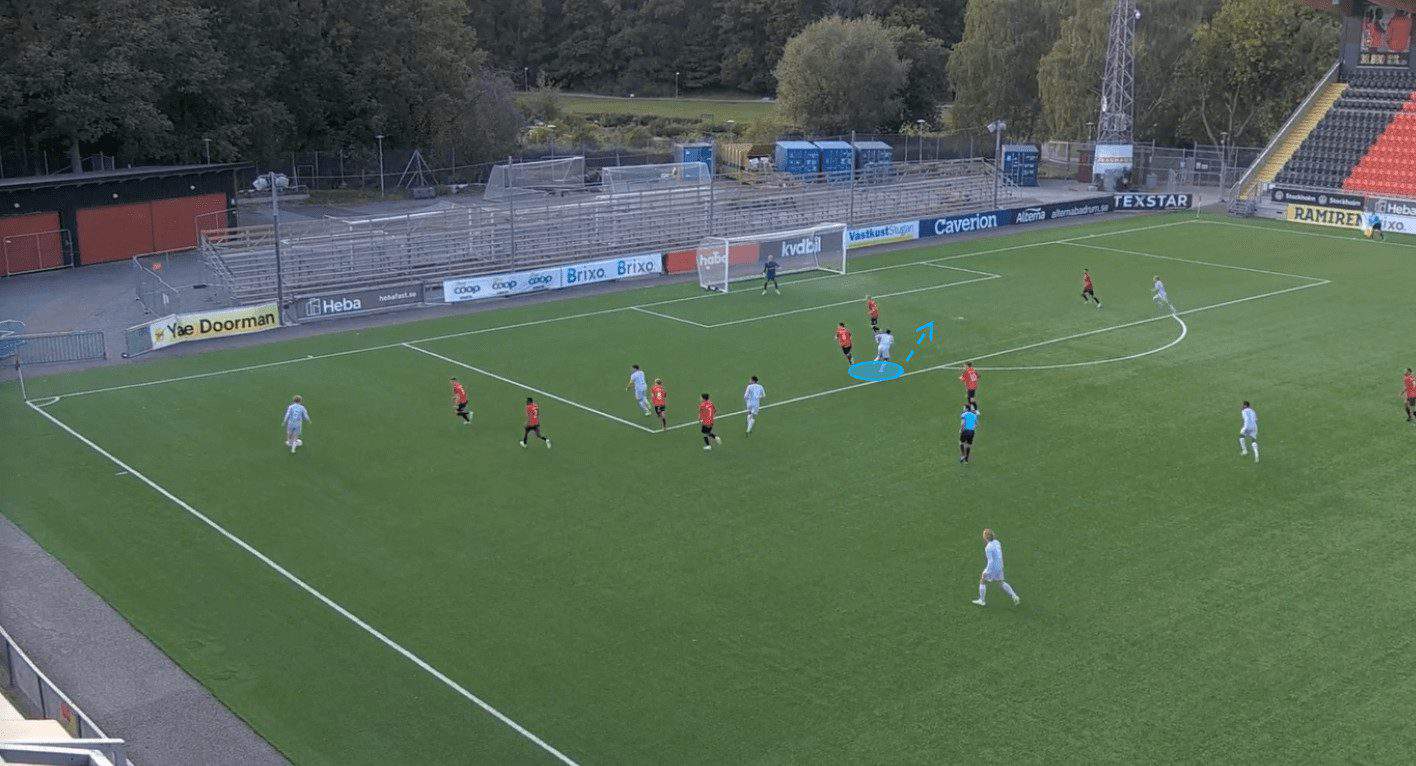
Jawla’s off-the-ball movement is not limited to making runs behind the defensive line. He is able to lose his marker quite effectively, especially in situations such as the one above, where the ball is being played out wide. We can see that he identifies where the space is and easily moves away from his opponent.
The Djurgården forward is also very skilled at using body feints and quick changes of direction to create some extra space for himself in the penalty area. This is extremely beneficial when his team are playing in the wide areas as it means they can play crosses into the box in the knowledge that their forward will be able to create enough space for himself to turn the ball goalwards.
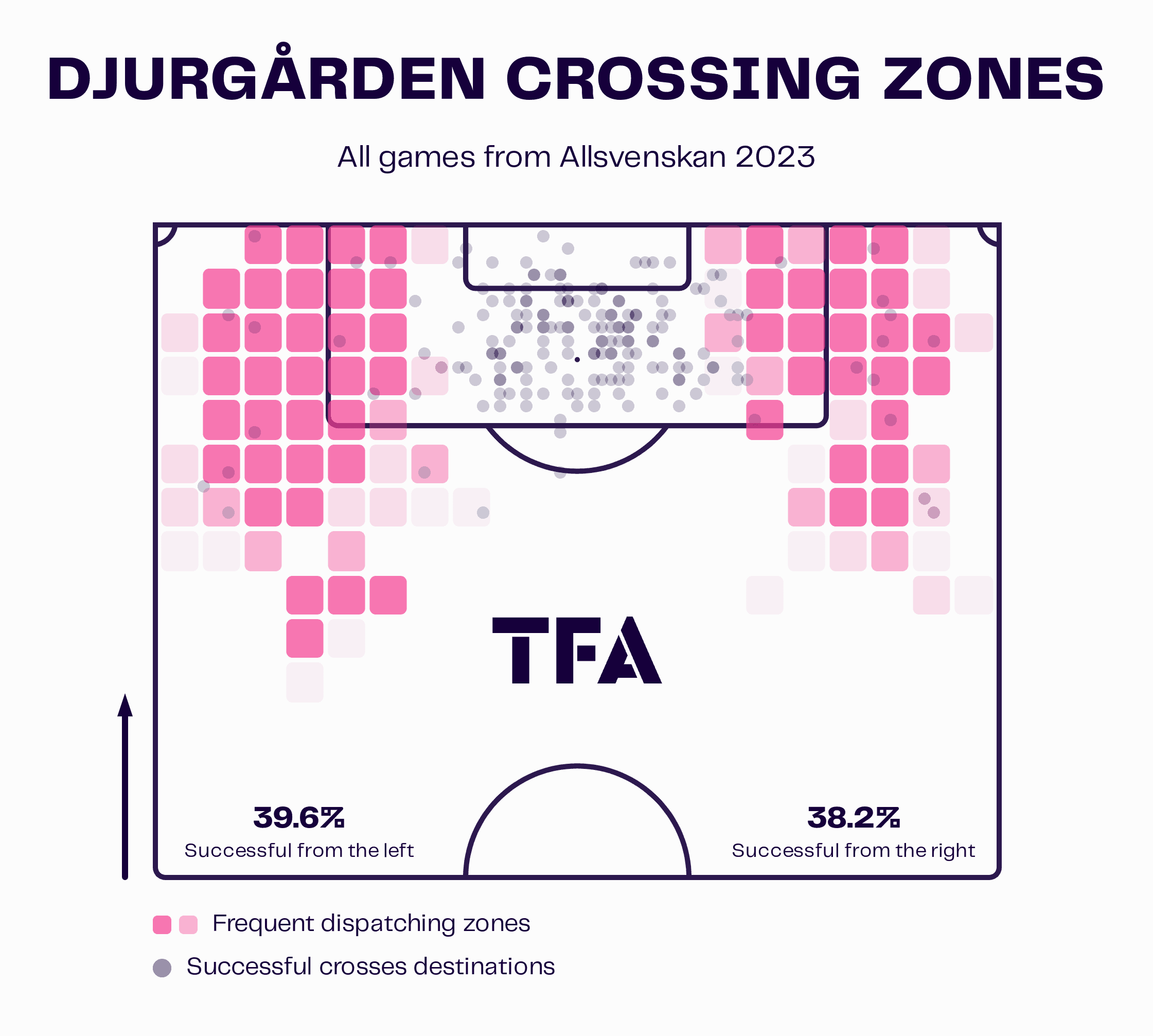
Djurgården’s senior team put 19.06 crosses into the box per 90. Most of their attacking play revolves around getting the ball out to the wide players and then working the ball into the box via a cross or progressive pass. This is why it is essential that Jawla can create space and lose his marker in the opposition’s penalty area; it will increase the likelihood of him being able to get on the end of any crosses coming in.
The goalscorer
Of course, as a centre forward, Jawla’s primary task on the field is to score goals; with four goals in seven games to his name so far in the U19 Allsvenskan it represents a decent start to the campaign. Additionally, the youngster bagged a hat trick in the single U17 game he played this season.
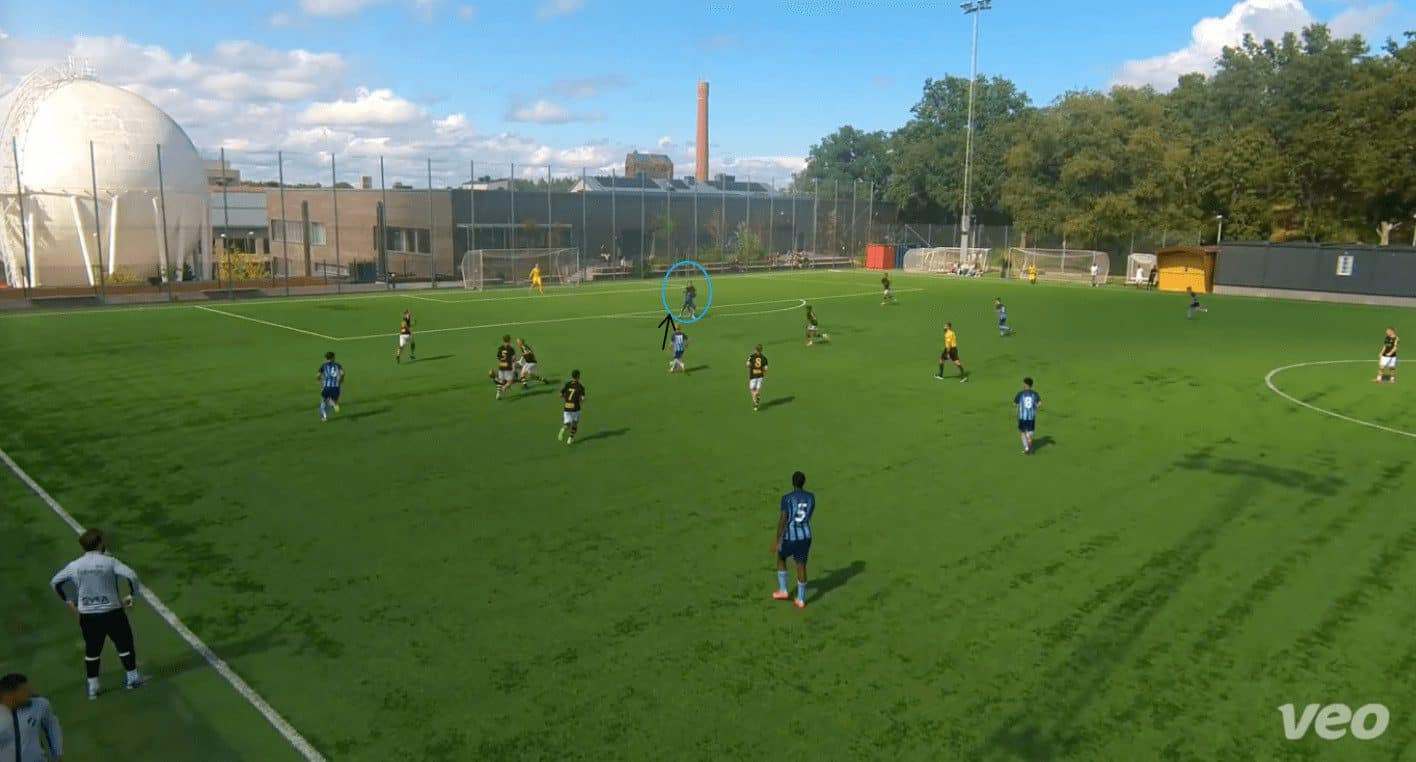
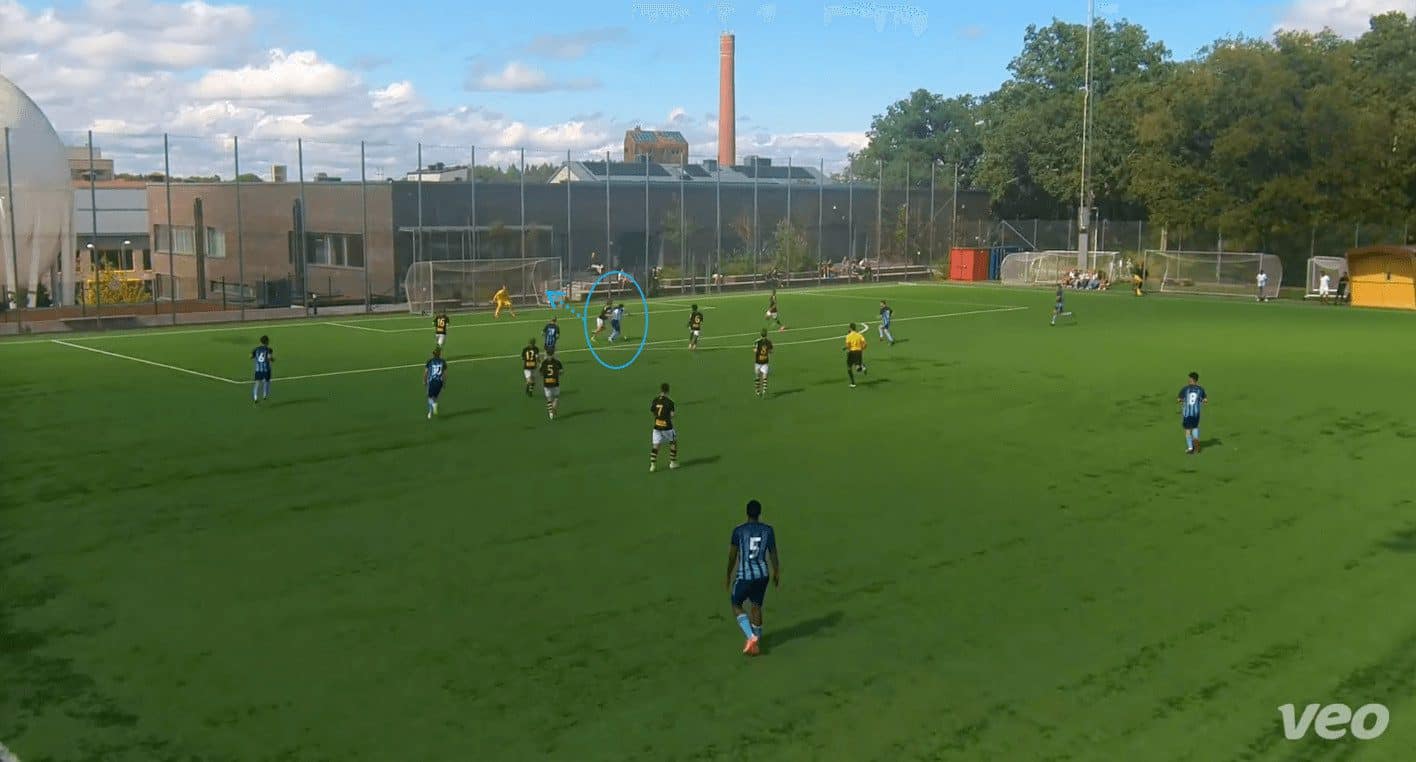
We have seen how Jawla can make runs in behind and can lose his opponent to free himself up for a cross into the box. In this scenario above, we can see another aspect of his centre-forward play that often leads to goals. The 17-year-old is brilliant when playing with his back to goal.
When Djurgården U19 are not looking to hit their opponents on the counterattack, they will look to play through the thirds, still moving the ball quickly though. This allows the Sweden U18 international to use his physical strength and close control to his team’s advantage.
Jawla likes the ball played into his feet, which means he can use his strength and body orientation to prevent his opponent from being able to intercept the pass. He then takes a touch and quickly spins away from his opponent to hit a powerful shot into the bottom corner. He attempts to do this frequently; all three of his goals in the U17 game this season came from very similar scenarios.
His ability to make runs in behind offers a significant goalscoring threat, as we know, due to his speed and calmness in front of goal. Here, we can see how Jawla’s ability to hold up the ball and play with his back to goal can lead to goalscoring opportunities.
Additionally, his off-the-ball movement allows him to get into the box and lose his marker to get on the end of an incoming cross. This means he is versatile in the types of goals he can score, which, of course, makes him difficult to defend against. This versatility means his team can go long, put crosses in or play into his feet; it gives them multiple options in the attacking phase.
Pressing high
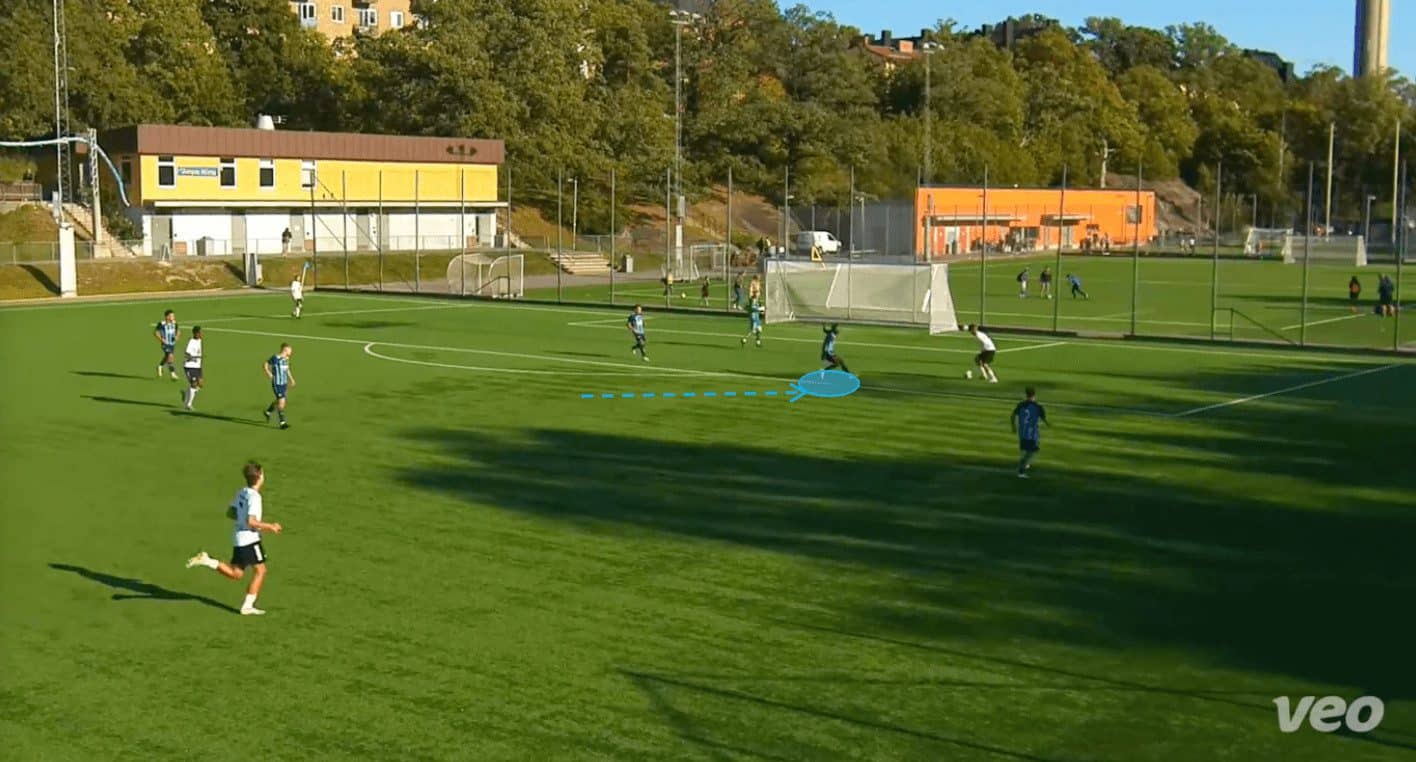
We’ve seen how Djurgården U19s will move into a low block in the defensive phase, which allows them to utilise Jawla’s speed in transition. They like to keep their opponents guessing and will look to engage in a counterpress at opportune moments throughout the game.
It is often the responsibility of Jawla to lead the counterpress, signalling his teammates to follow his lead. His speed and agility mean it can be difficult for opponents to play their way out of his counterpress. However, once the press has been bypassed, the young centre forward can be a little slow to track back.
This can disrupt the opponent’s build-up play, preventing them from comfortably passing the ball from the back. The pressure can force mistakes, turnovers, or hurried clearances, giving Jawla and his teammates a chance to regain possession in advanced positions. Plus, this allows them to limit the passing options available to the opponent, particularly in crucial areas of the pitch. This impacts the opponent’s ability to build attacks through the central regions, forcing them to play longer, less controlled passes that are more likely to lead to turnovers.
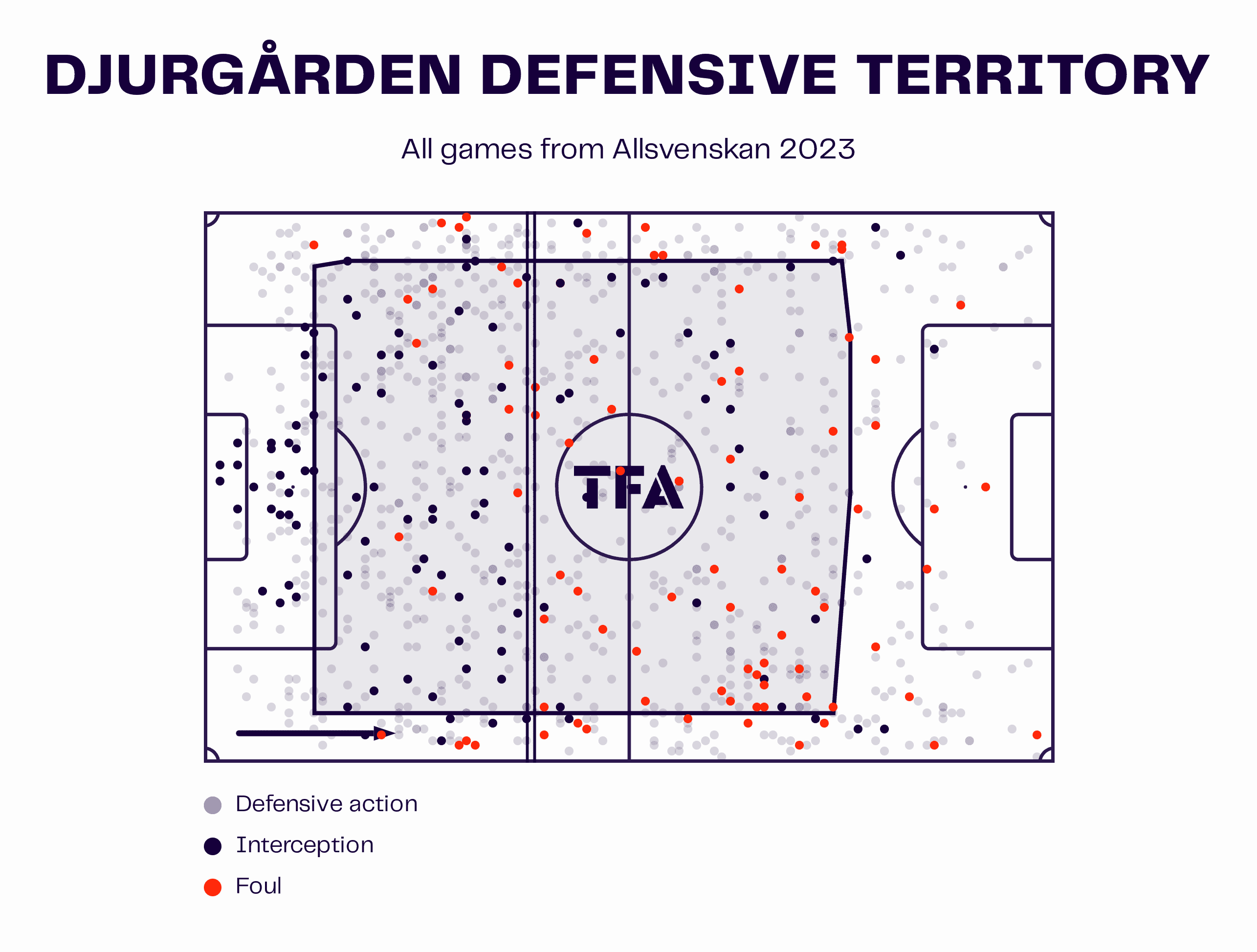
If we look at the defensive territory of the senior team via the data viz above, we can see that their defensive actions take place relatively high up the pitch. With a PPDA of 11.33, they are not the most high-pressing team in the league, but Djurgården tries to limit their opponent’s ability to play out from the back. If given an opportunity in the first team, Jawla would likely be able to adapt to the system relatively quickly. His speed and pressing ability could be beneficial when Djurgården are looking to engage in a counterpress after losing possession.
Conclusion
In this analysis piece, we have highlighted the key aspects of Kalipha Jawla’s style of play. We have seen how the 17-year-old is dynamic with the ball at his feet and is a highly positive player who looks to make things happen on the pitch.
We have also shown how his off-the-ball movement and goalscoring abilities could be useful in the senior team. Plus, we have seen how he can successfully lead a counterpressing team from the front.
Kalipha Jawla may only be 17 years old, but he is a very talented young player with a bright future ahead. It’s likely that we will see him establish himself in the Djurgården first team over the coming seasons. One to watch out for in the future, for sure.





Comments